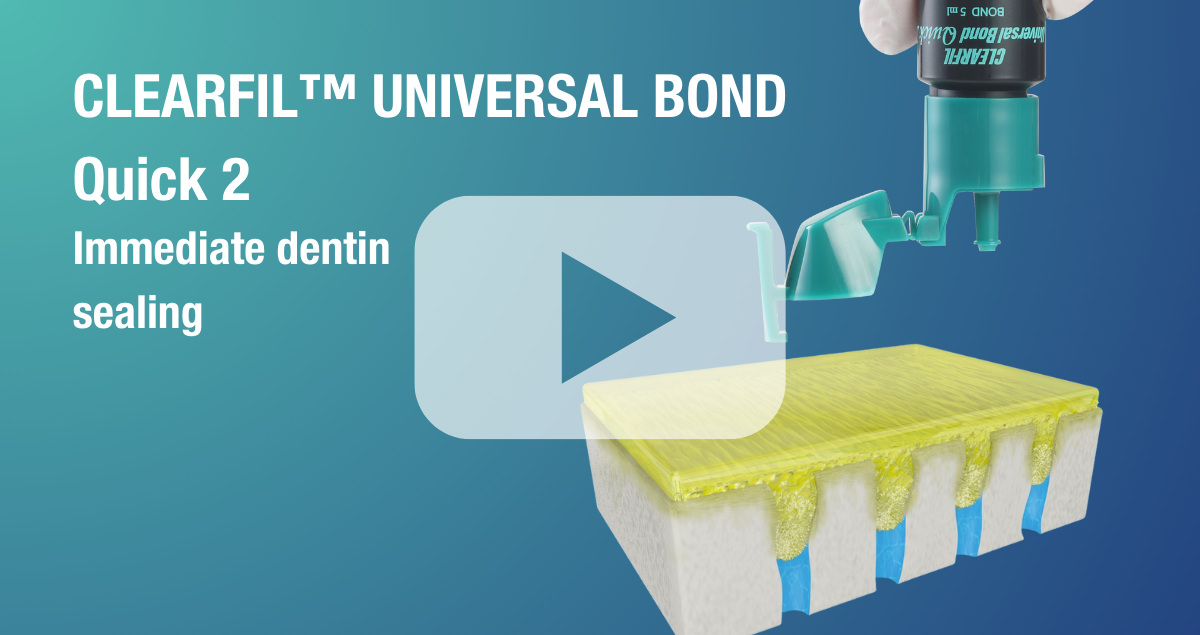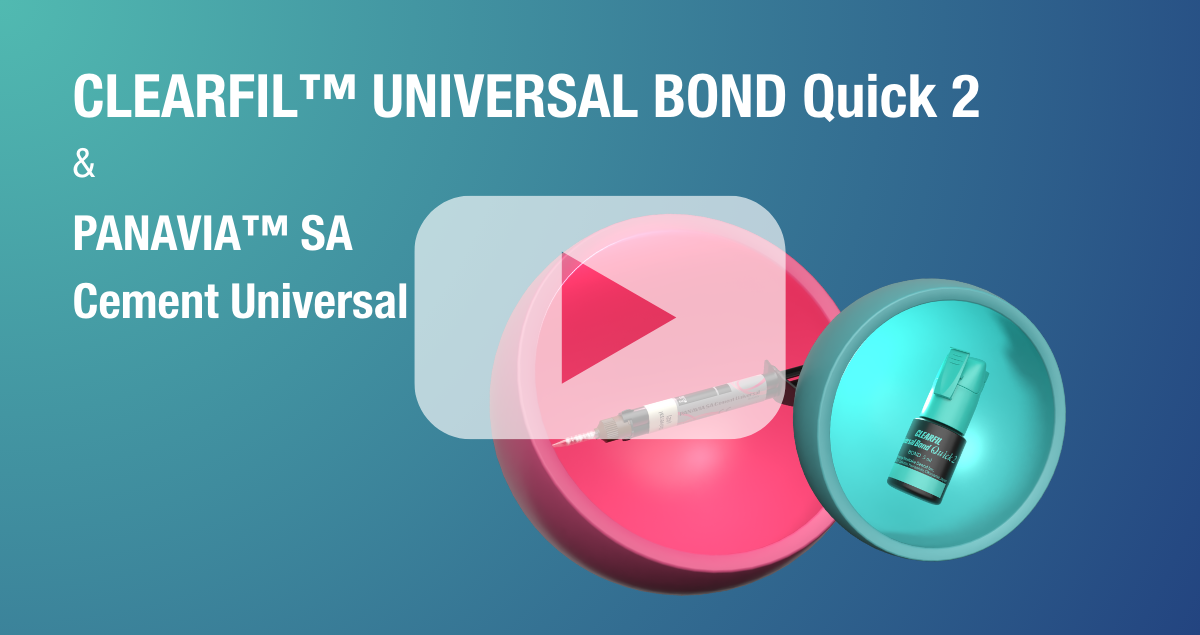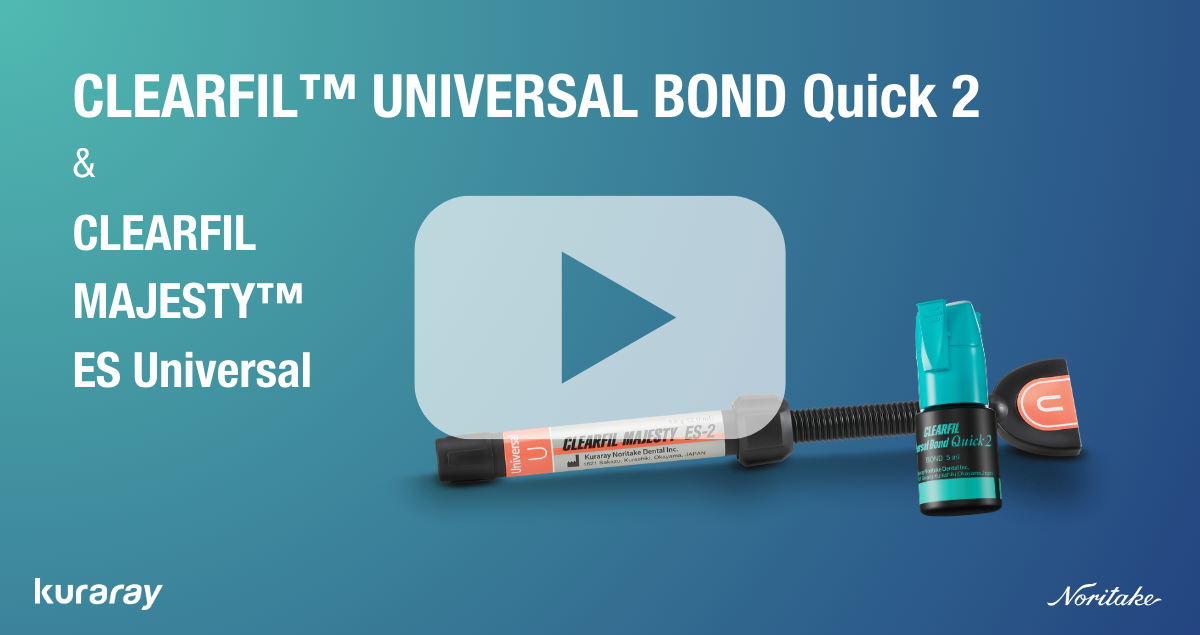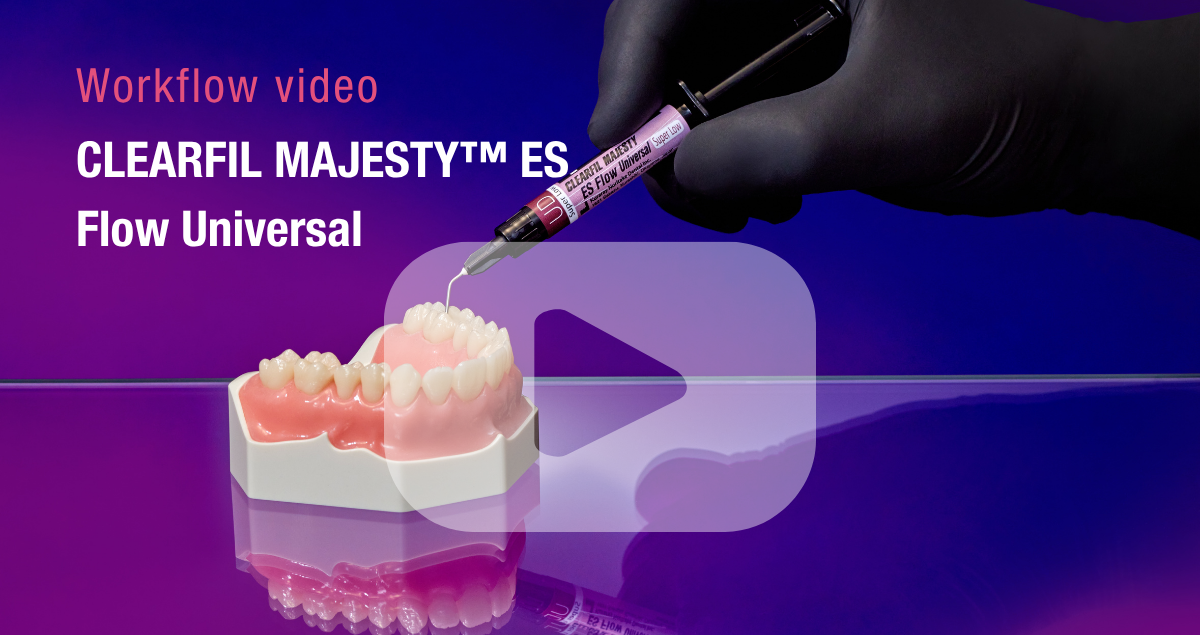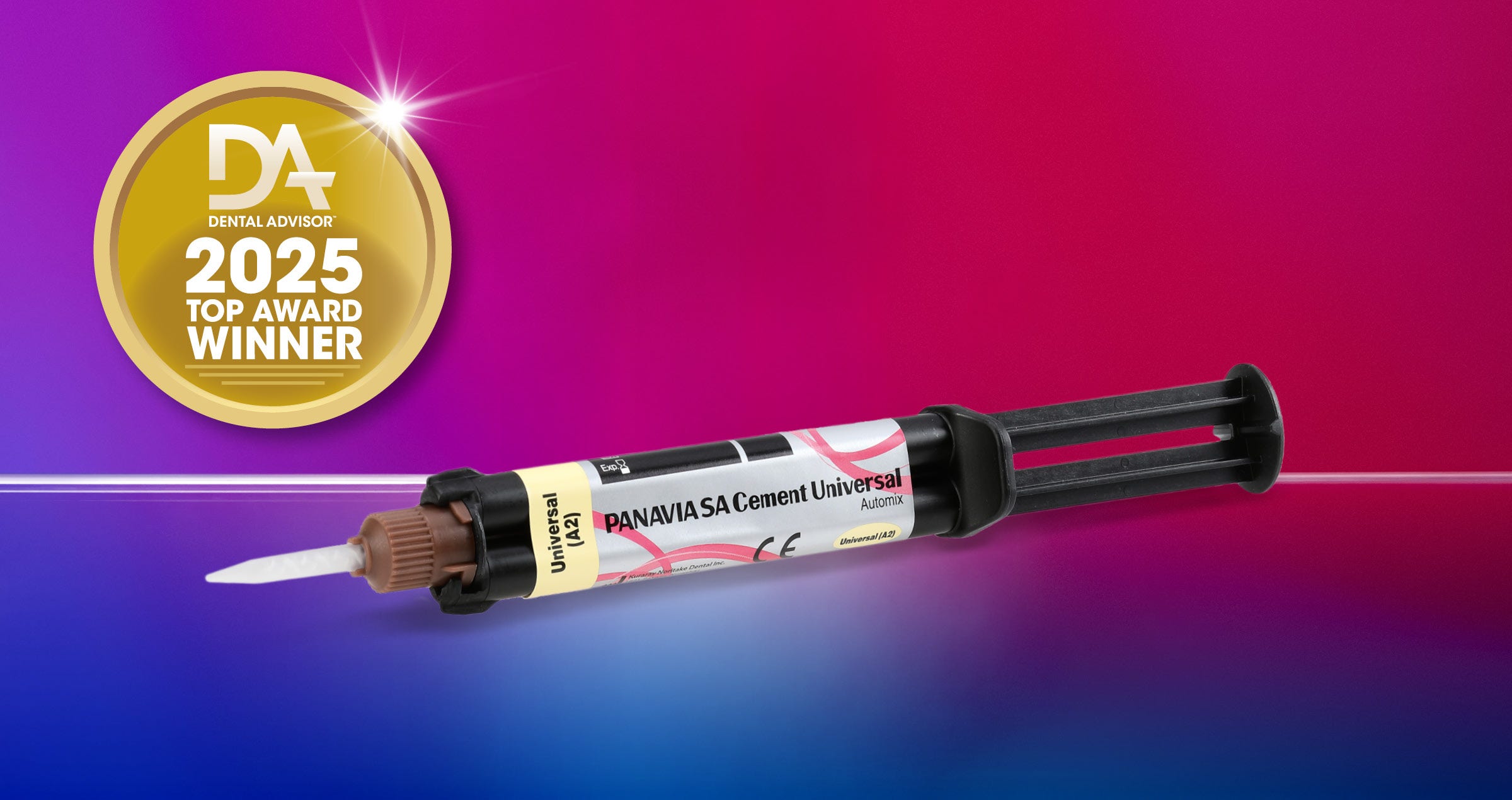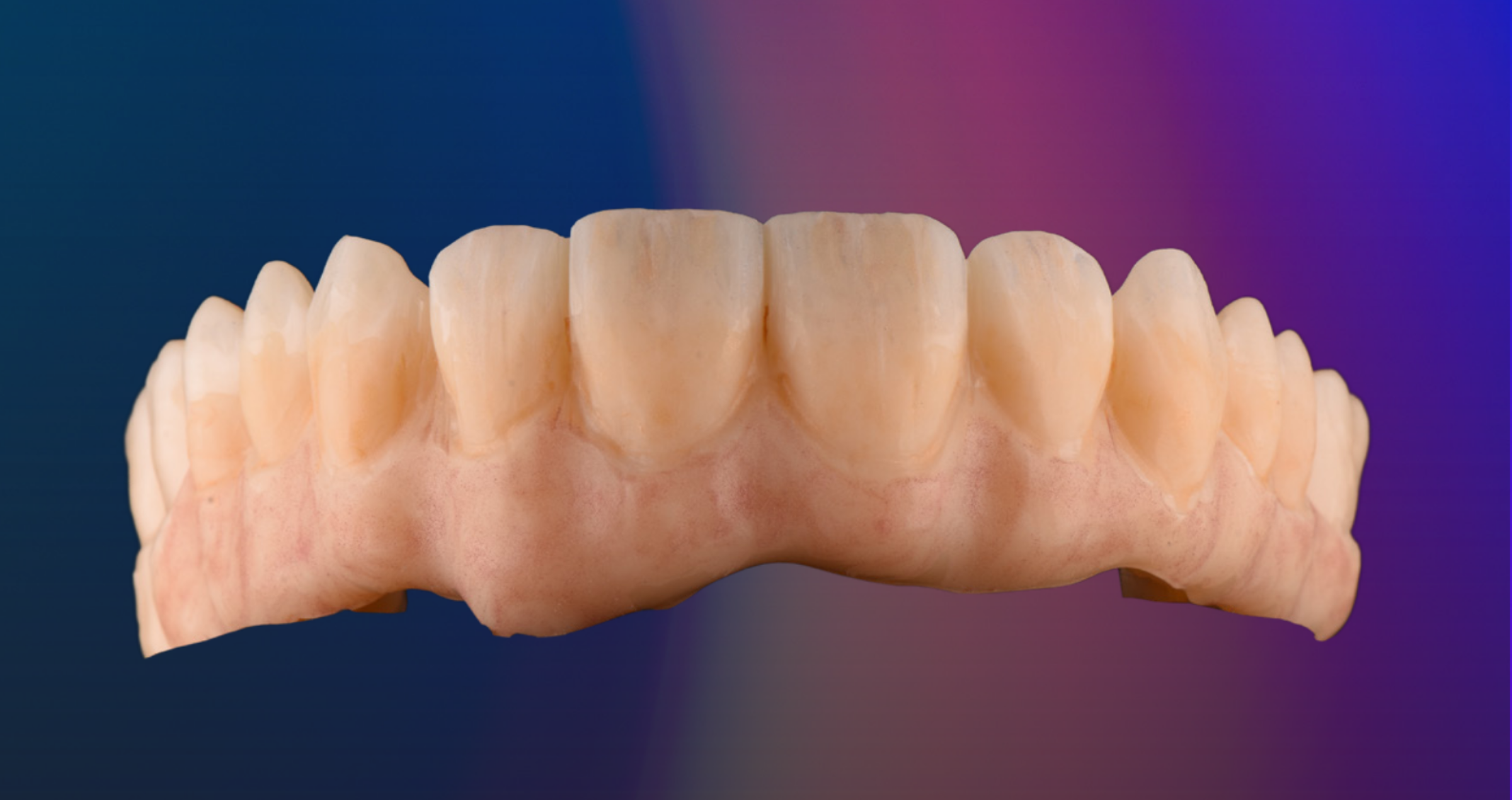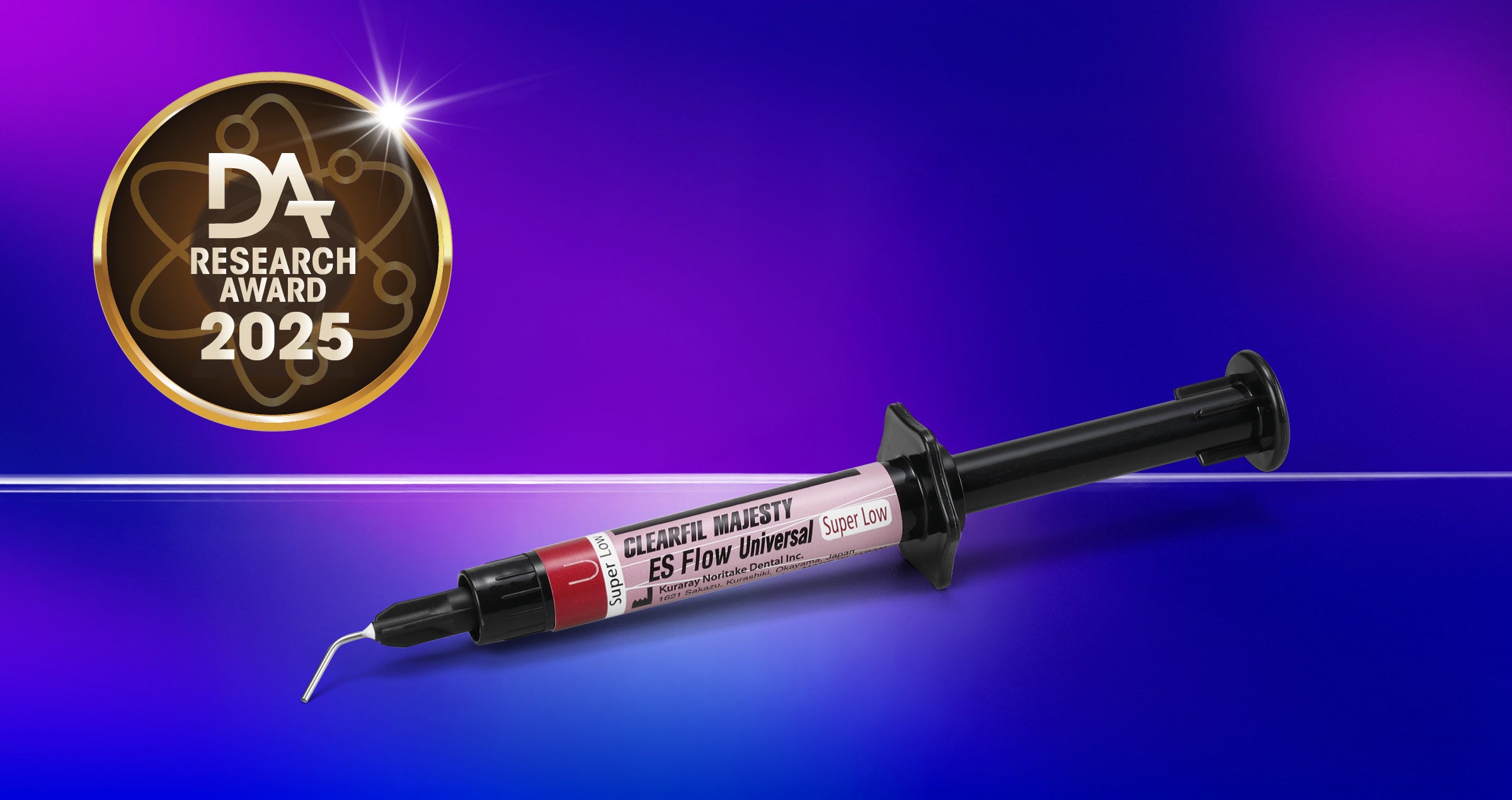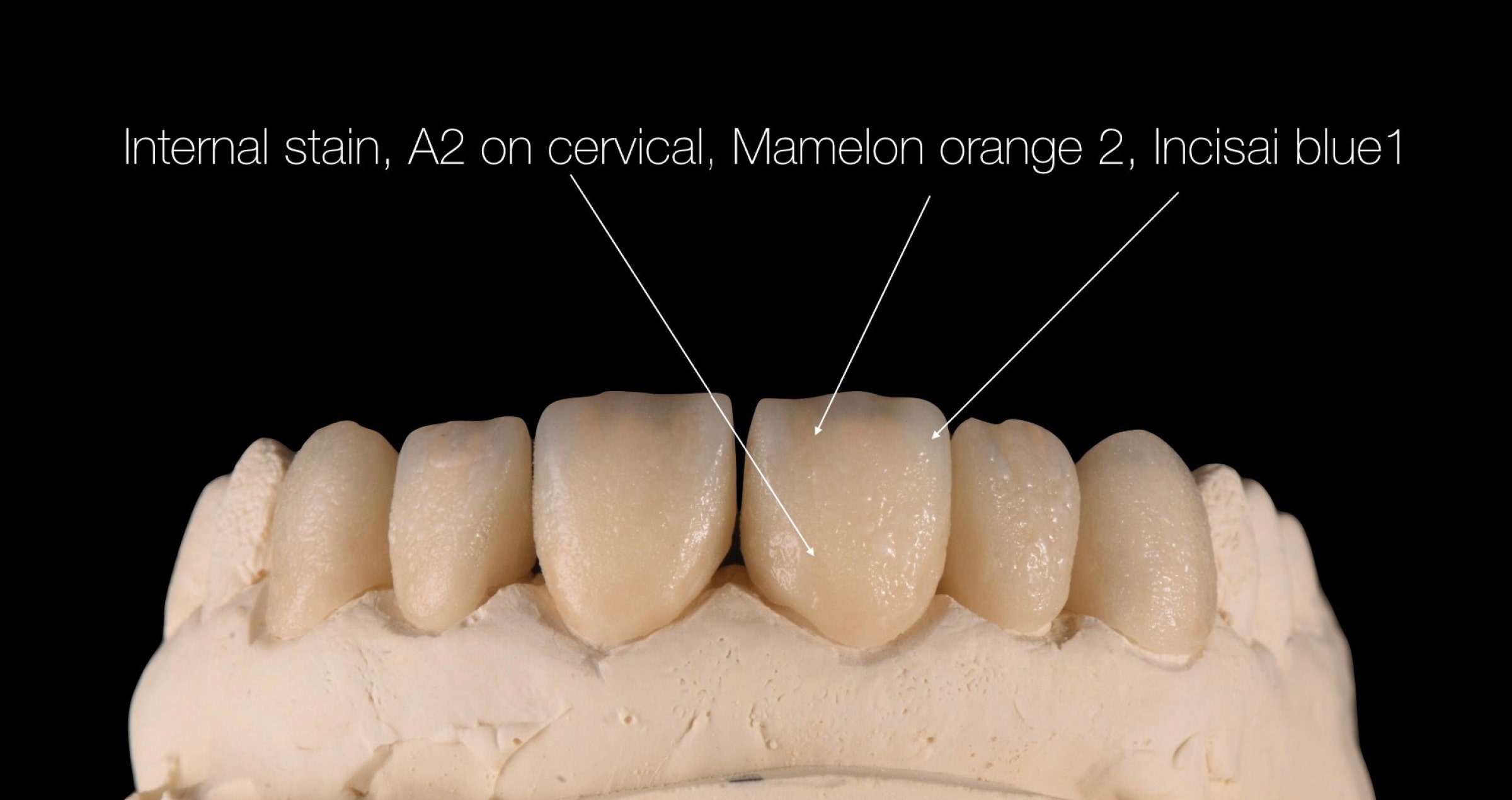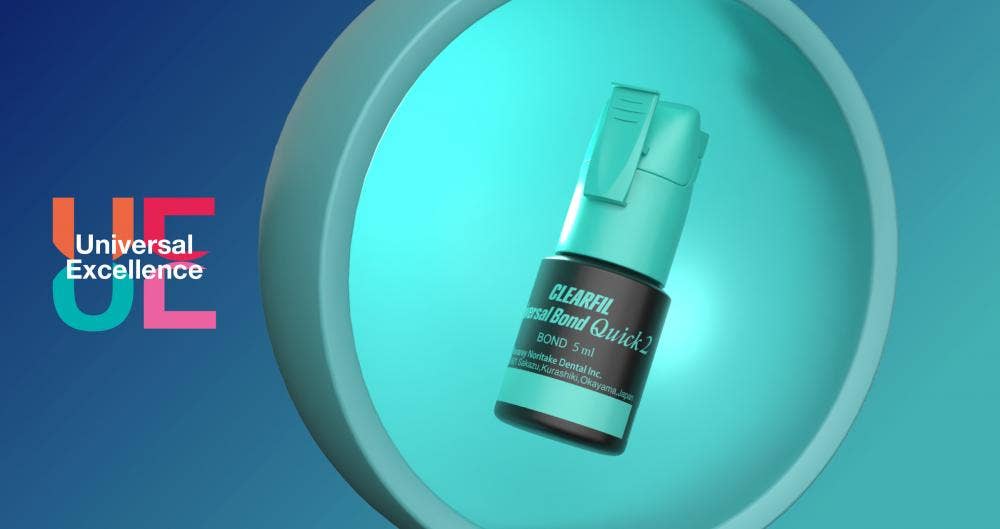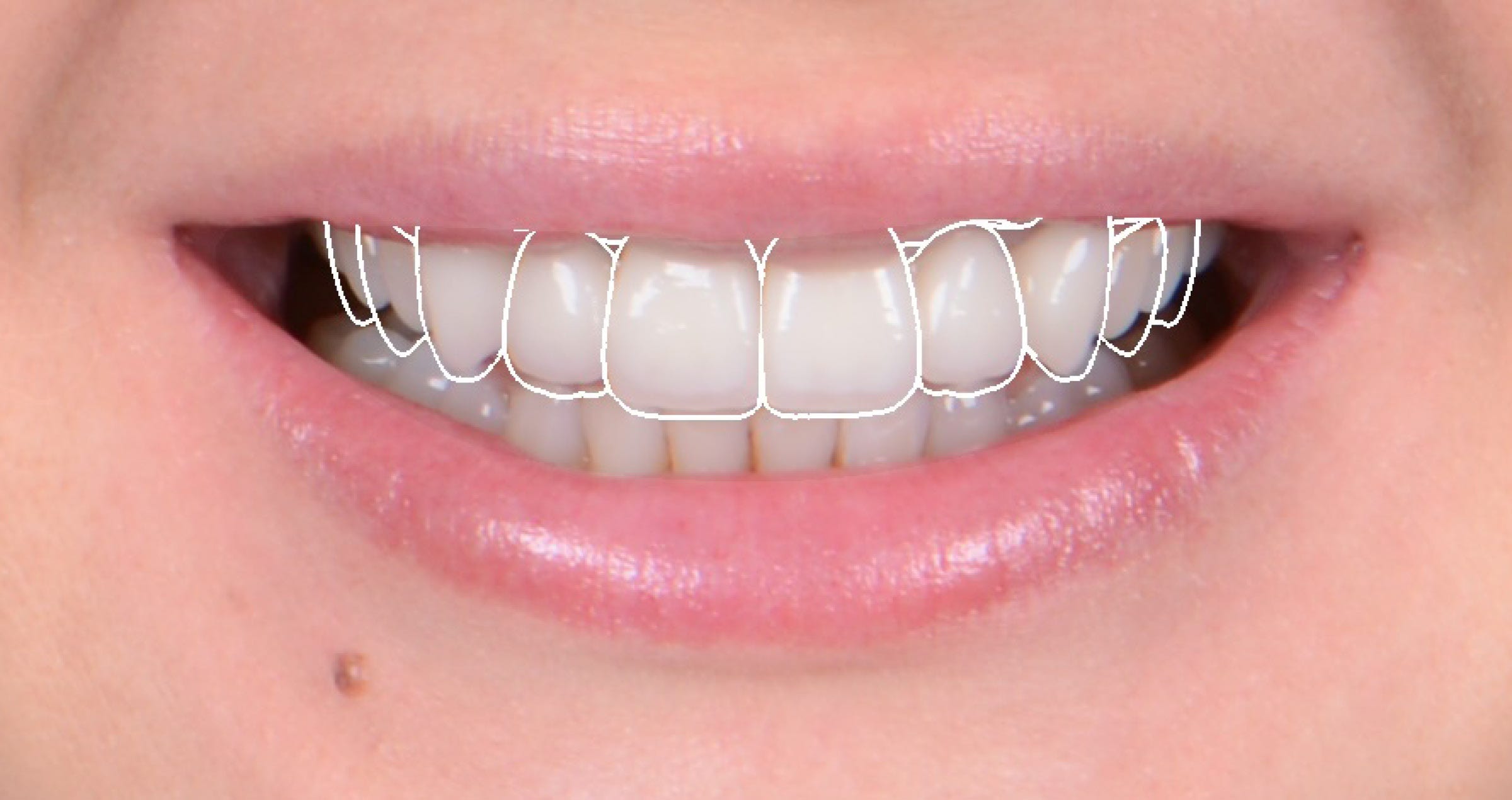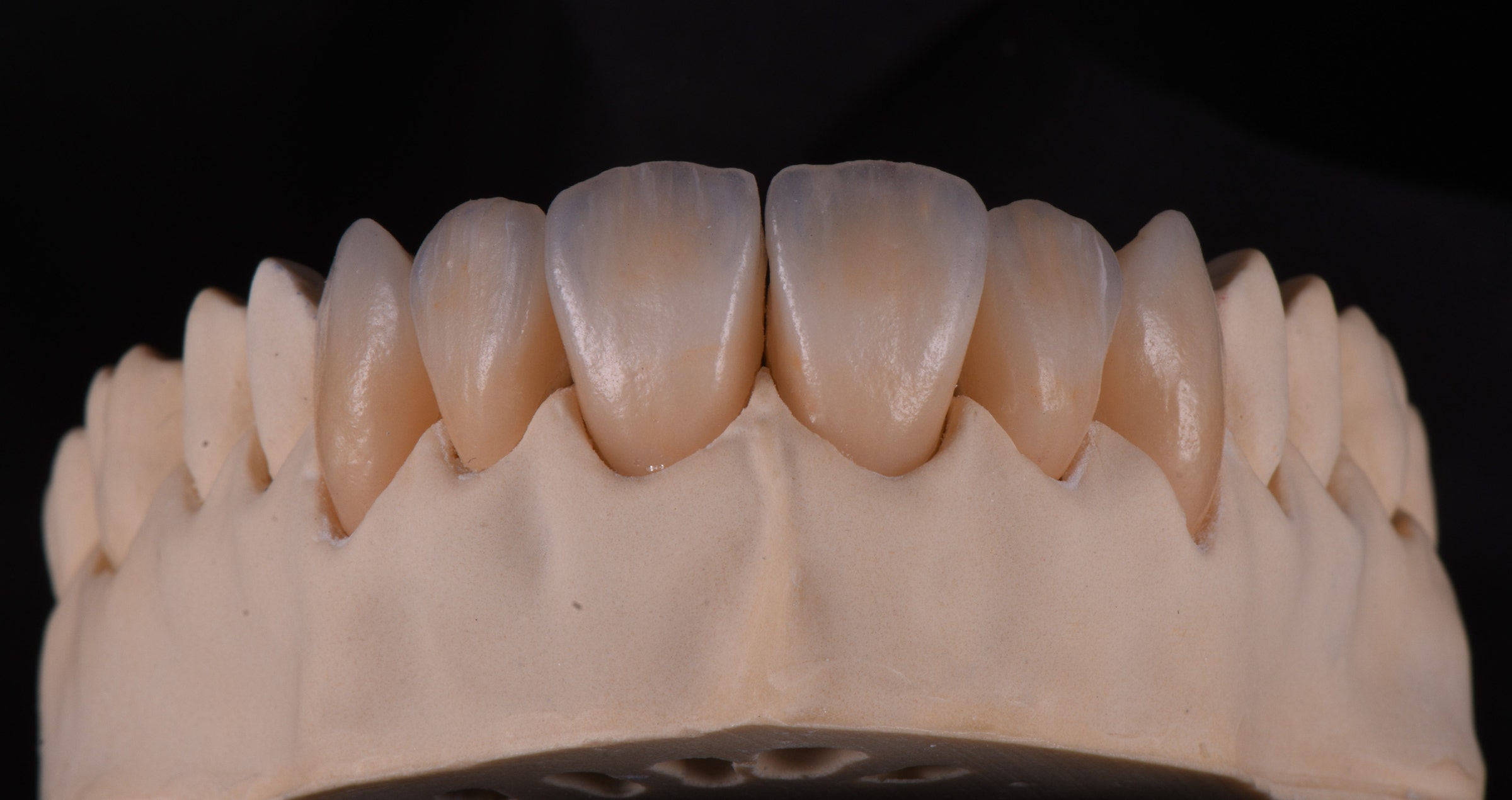Case by MDT Andreas Chatzimpatzakis
EFFECTIVE FINISHING OF A ZIRCONIA FRAMEWORK WITH CERABIEN™ MiLai
‘Modern concepts are based on the smart combination of different materials.’
The implant-prosthetic restoration of edentulous jaws requires more than functional stability. Modern concepts are based on the smart combination of different materials. In the presented case, a titanium bar provides for a stable connection between the implants, while a zirconia framework offers the necessary strength and fracture resistance. Both materials stand out due to their high biocompatibility, the good soft tissue attachment properties of zirconia being particularly noteworthy. The real challenge in the selected type of restoration, however, begins with aesthetic realization. Micro-layering techniques promise efficiency combined with aesthetics – but this often comes with compromises, e.g. in terms of handling. With CERABIEN™ MiLai (Kuraray Noritake Dental Inc.), a new path is now being taken here.
MDT Andreas Chatzimpatzakis, Athens
The rapid development of all-ceramic framework materials such as zirconia and lithium disilicate calls for new veneering concepts. CERABIEN™ MiLai (Kuraray Noritake Dental inc.) picks up on the strengths of classic powder ceramics and optimizes them for the requirements of micro-layering – the reinterpretation of a classic, so to speak. The basis for this is provided by synthetic feldspathic ceramic technology, in which Kuraray Noritake Dental Inc. has decades of experience. The company developed its first synthetic dental ceramics back in the late 1980s – expertise that is now also used in the low-fusing porcelain system CERABIEN™ MiLai for micro-layering. Unlike natural feldspathic ceramics, the synthetic version provides for consistent properties without the need to adjust the formulation due to altering raw materials. This is reflected in stable coefficients of thermal expansion and a uniform particle distribution; prerequisites for aesthetic results and colour stability. Another decisive advantage is evident during the firing process: the special composition prevents micro-movements in the material during firing, which can lead to inhomogeneities and gray haze effects with conventional ceramics. This property is indispensable for micro-layering, as any irregularity, no matter how small, would be immediately visible in the thin ceramic layers.
INITIAL SITUATION
The presented case illustrates the technical procedure around the restoration of an edentulous maxilla. The prosthetic work was produced after the placement of six implants and their osseointegration. In consultation between the practice team around prosthodontist Dr Georgios Siavikis, laboratory technician and patient, the decision was made to restore the teeth with a bar-supported bridge construction. A CAD/CAM-fabricated titanium bar (Atlantis® BridgeBase, Dentsply Sirona) formed the basis. Due to its high manufacturing precision, it would provide for a passive fit of the reconstruction on the implants. The material of choice for the superstructure was zirconia, which was to be finalized using micro-layering due to the patient’s high aesthetic demands.
Fig. 1. Computer-aided design of the implant bar.
Fig. 2. Computer-aided design of the zirconia framework – transparent view revealing the BridgeBase.
Fig. 3. Computer-aided design of the zirconia superstructure.
WHY CHOOSE MICRO-LAYERING?
The decision to opt for micro-layering is based on tangible benefits: In addition to economic efficiency, the thin layer of porcelain provides a high level of safety and significantly reduces the risk of chipping. In addition, the ultra-thin porcelain layer enables a controlled approach to porcelain layering. However, we must be aware that with micro layering, around 80 to 90 percent of the restoration’s final shape is already created in the framework. Although this leads to maximum control during layering, it also places high demands on the selected framework material. With porcelain layer thicknesses in the micro range, the zirconia needs to be convincing in terms of aesthetics and mechanical strength. For our long-span bridge construction, we chose KATANA™ Zirconia HTML Plus (Kuraray Noritake Dental Inc.), a material that combines high strength with natural translucency. We deliberately opted for a disc in the shade A2 – one shade lighter than the desired target shade A3. This strategic choice enabled us to play with the colours during layering and implementation of the internal stain technique.
Fig. 4. Multi-Layered zirconia with a high strength and translucency used as a framework material.
WHY OPT FOR INTERNAL STAINING?
The internal stain technique is no longer an insider tip, but is one of the supreme all-ceramic disciplines. Kuraray Noritake Dental Inc. has perfected the technique over decades together with dental technicians. We particularly value the technique in our day-to-day laboratory work, as it gives restorations an individual touch that sets them apart from standard work. Unlike superficial stains, the internal staining creates a characterization from inside the restoration with a lively play of colours that unfolds naturally in changing light conditions.
Until now, it has been challenging to combine the advantages of the internal stain technique with those of micro-layering. Although we have put various approaches to a test and detected solutions that do work, we have always come up against technical limitations. The combination of both techniques – micro-layering and internal staining – places special demands on the porcelain system: It needs to allow characterization from the inside and at the same time be able to be processed in ultra-thin layers. CERABIEN™ MiLai closes the previous gap. As a low-fusing porcelain system, it combines the advantages of the internal stain technique with the efficiency of micro-layering. Being a powder-based porcelain system, the product may be used in the familiar way – only much more efficiently. The possibility of adjusting the consistency to individual needs gives us the precise control we need for minimal layer thicknesses. With 16 porcelains and 15 internal stains, the system remains manageable without compromising on design.
Fig. 5. The low-fusing porcelain CERABIEN™ MiLai is designed for micro-layering on zirconia and lithium disilicate.
FRAMEWORK PREPARATION
After milling and sintering, the framework in its cut-back design was processed systematically: The first step was to treat the zirconia surface with a diamond bur – under water cooling to avoid microcracks. In this phase, it is also possible to incorporate fine anatomical details such as mamelon structures or marginal ridges. To provide for a strong bond, the surface of the framework was then sandblasted with 50 μm alumina particles. In this context, it is important to apply a moderate pressure that conditions the surface without weakening the structure. Framework preparation was completed with ultrasonic cleaning for ten minutes. All this created the basis for a reliable bond between the framework and the veneering porcelain.
Fig. 6. Zirconia framework prepared for finishing.
INTERNAL STAINING MEETS MICRO-LAYERING
Next on the list was internal staining. It is often the smallest details that have the biggest effect – be it a prominent marginal ridge or an intensive cervical colouration. Sometimes, however, less is more. It is often a question of the dental technician’s artistic sensitivity and – of course – the individual situation. In this case, Tissue Red was used for a vivid effect of the gingival areas, while a combination of Cervical 2, Incisal Blue 1 and Mamelon 2 was chosen to give the teeth a three-dimensional depth effect. Subsequent micro-layering was carried out selectively: CCV2 in the cervical area, Creamy Enamel for lighter margins and LT1 for the desired standard translucency and opalescence. The gingiva was given its natural depth through a sophisticated interplay of shades and shapes – with a base of Tissue 1 and 5, while the keratinized areas were given their characteristic appearance with a 60/40 mixture of Tissue 1 and TX.
Fig. 7. Internal staining: Targeted application of the stains on the framework as the basis for the three-dimensional colour effect of the restoration.
Fig. 8. Micro-layering: Ultra-thin layering on the characterized framework gives the restoration its final shape and light dynamics.
What followed was the first bake. CERABIEN™ MiLai is a low-fusing porcelain. Its firing temperature of 740 °C is not only the enabler of its compatibility with various framework materials (zirconia, lithium disilicate), but also reduces the risk of distortion or micromovements causing unwanted changes in shape during repeated firings. Minor shape corrections were made after the first bake. In this step, a particular advantage of powder ceramics in micro-layering becomes apparent: they allow for precise modelling of even the finest structures and textures. The surface structure with its lively textures gives the work its natural appearance. The final glaze firing leveraged the self-glazing effect of CERABIEN™ MiLai.
Fig. 9. Occlusal view of the finished restoration.
Fig. 10. Clearly visible internal colour characteristics.
Fig. 11. Lively surface structure with interplay of concave and convex areas both in the area of the teeth and the gingiva.
Fig. 12. Restoration in situ; edentulous maxilla with an implant-based zirconia bridge. The patient’s wishes regarding individual aesthetics are fulfilled thanks to internal staining and micro-layering (CERABIEN™ MiLai) – effectively, economically and safely.
EFFECTIVE AND FLEXIBLE
In the case presented, we combined the internal stain technique with micro-layering to fulfil the patient’s individual aesthetic demands. However, CERABIEN™ MiLai is just as suitable for micro layering without internal staining – fast, straightforward and effective. And this is precisely the advantage of this system: it offers the flexibility to go your own way – tailored to the respective situation and to the framework material (zirconia and lithium disilicate), eliminating the need to store different porcelain systems. Particularly useful: CERABIEN™ MiLai can be combined with the tried-and-tested CERABIEN™ ZR porcelain. Thanks to the low firing temperature, areas that have already been layered remain stable in shape and colour. The high versatility makes CERABIEN™ MiLai our preferred system for effective micro-layering. MiLai YOUR WAY – we have found our way with it and know that we have the right solution for every case.
‘THE HIGH VERSATILITY MAKES CERABIEN™ MILAI OUR PREFERRED SYSTEM FOR EFFECTIVE MICRO-LAYERING.’
Dental technician:
ANDREAS CHATZIMPATZAKIS
Andreas Chatzimpatzakis graduated from the Dental Technology Institute (TEI) of Athens in 1999. During his studies, he followed a program at the Helsinki Polytechnic Department of Dental Technique, where he trained on implant superstructures and all-ceramic prosthetic restorations. Since the year 2000, he has been running the ACH Dental Laboratory in Athens, Greece, specialized on refractory veneers, zirconia and long-span implant prosthesis. In 2017, Andreas travelled to Japan, where he was trained by Hitoshi Aoshima, Naoto Yuasa and Kazunabu Yamanda to become an Official Trainer for Kuraray Noritake Dental Inc.


